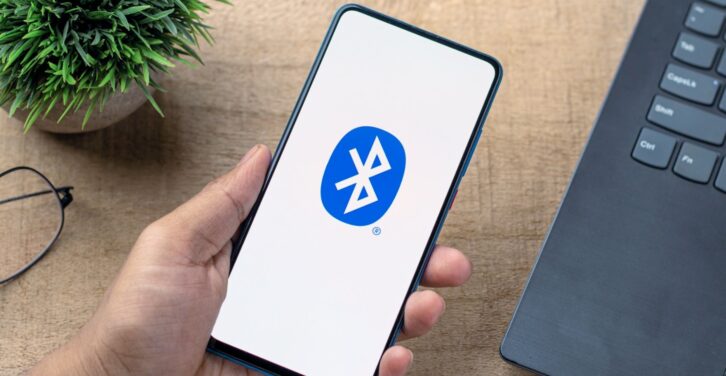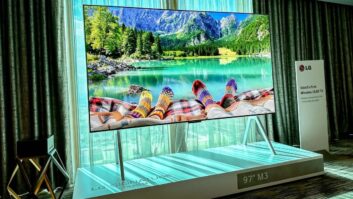
Editor’s Note: This article originally appeared on Tom’s Guide.
If you’re interested in better sound quality in your headphones and speakers, listen up: Bluetooth bandwidth is going to double in the next few years. At least that’s the plan according to the Bluetooth Special Interest Group (SIG).
In a briefing held over Vimeo, the company said it wants to raise the current bandwidth of the wireless transmission protocol from around “4Mbps to 6Mbps — maybe up to 8Mbps” and will start exploring the 6GHz frequency band to enable faster transmission.
Currently, Bluetooth 5.0 offers variable speeds from 125Kbps to 2Mbps, which is significantly slower than the 4.6Mbps needed to transfer lossless 24-bit/96kHz hi-res audio. Having twice the bandwidth, however, would make transferring that much data possible in every device that supports Bluetooth.
Unfortunately, Chuck Sabin, the SIG’s senior director of market development, said “When you ask us, ‘Well, when is this going to happen?’ It’s really too early to talk about timing but we do see this as securing the next 20-years-plus of performance enhancements for Bluetooth technology and the drive for more and more devices taking advantage of Bluetooth technology.”
Bluetooth is one path to reach peak wireless audio performance
What’s compelling about the Bluetooth SIG’s announcement is that it paints a picture of a future where all headphones and speakers will be capable of hi-res audio playback — not just ones with a special chipset and support for advanced codecs like aptX Lossless or LDAC that’s only available on a few devices like the Sony WH-1000XM5.
Another avenue that’s being pursued by audio manufacturers is using Wi-Fi to deliver the speeds necessary to listen to lossless audio. As Wi-Fi 6 can reach speeds of 9.6Gbps, it’s very much capable of delivering lossless audio — but it requires you to stay tethered to your home network that doesn’t extend very far.
While wireless hi-res audio is still a ways off for Bluetooth, Sabin says the Bluetooth SIG is focused on bringing Bluetooth LE to more devices and implementing Auracast technology in more spaces. The former allows Bluetooth devices to conserve battery life with a lower-powered compression algorithm while the latter offers location-based Bluetooth where many headphones can connect to a single source simultaneously. (Think sports stadiums, restaurants and gyms, and you’ll be on the right track.)
Because the Bluetooth SIG can only control the development of the technology — not its implementation, which is left to device manufacturers like Sony, LG and others — it’s hard to say how soon we’ll see these features in action.
Hopefully device makers will see the opportunity the next generation of Bluetooth presents and bring it to our favorite devices sooner rather than later.
About the Author
Nick Pino heads up the TV and AV verticals at Tom’s Guide and covers everything from OLED TVs to the latest wireless headphones. He was formerly the Senior Editor, TV and AV at TechRadar (Tom’s Guide’s sister site) and has previously written for GamesRadar, Official Xbox Magazine, PC Gamer and other outlets over the last decade. Not sure which TV you should buy? Drop him an email or tweet him on Twitter and he can help you out.
See also: Cleer’s ALPHA Noise Cancelling Headphones Now Available In Black Finish












